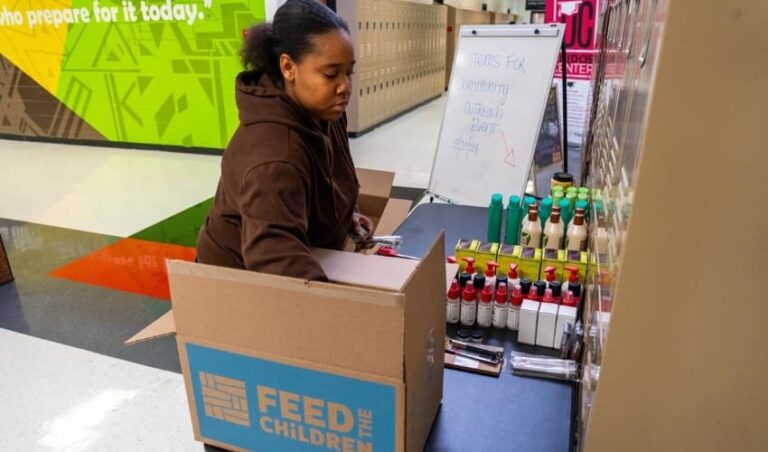
Healthy Habits Start Early: Nurturing Kids’ Relationship with Food
Excellent childhood nutrition accomplishes two things. First, it provides children all the nutrients they need to develop into strong and healthy adults. Second, it creates the foundation for a healthy relationship with food that will last them their whole lives.
The first thousand days of a child’s life – from conception to age two – are the most important. If you are having or planning to have a child, make the most of those 1,000 days to set your child on the path to nutritional success!
Always make sure to consult with your obstetrician, pediatrician or other doctor before making any changes to your child’s diet. Certain medical conditions may also affect a child’s dietary requirements, which should be discussed with a doctor upon diagnosis.
Nutrition for Baby
The U.S. Dietary Guidelines for Americans recommends that infants be exclusively breastfed for the first six months. In cases when this is not possible, infant formula should be used as a substitute. Whether you bottle-feed or breastfeed, however, there are some general guidelines to follow to make sure your infant is receiving proper nutrition. According to the CDC, your infant:
- will not drink very much at first – their stomach is still tiny!
- may need feedings every hour during the first week.
- will gradually increase the amount they eat and decrease the number of feedings.
- may need additional Vitamin D supplementation, regardless of whether they are bottle- or breastfed.
Toddler Nutrition
By the time your child is 6 months old, you should be able to start adding solid foods. Now is the time to begin introducing your child to a wide variety of healthy, nutritious foods!
Some great foods for toddlers include:
- mashed potatoes and other mashed vegetables.
- thinly sliced or chopped soft fruit.
- cooked meat with the skin, fat, and any bones removed.
- oatmeal, rice, or other grains that have been thoroughly cooked (these may need to be mashed slightly).
Make sure that no food is hot or poses a choking hazard – small pieces only! Do not leave your child unsupervised when eating.
Your child will start to develop likes and dislikes during this time – don’t get stuck in a picky eating rut! If your child rejects a certain food, wait a few days and offer it again. You can also try experimenting. Perhaps your picky eater hates carrots when they’re cooked in soup but will happily eat them raw. Or maybe she doesn’t like green beans unless they’re mixed into mashed potatoes.
Shaping the Future
Helping your child develop a healthy relationship with food is about more than making sure they’re eating the right stuff – the experiences they have involving food and eating will shape how they engage with nutrition as they age. Here are some ideas to get your child interested in their nutrition in a fun, positive way:
1. Let them help pick out meals and ingredients. Young children don’t need complete autonomy over what they eat. However, including them in the decision-making process shows that you value their preferences and helps prepare them to continue making good choices when they start making their own meals. For example, you could ask, “We can have pasta and veggies or soup for dinner – which one would you like?” At the grocery store, tell them: “We need three potatoes for tonight’s recipe; can you go pick the ones you’d like to eat?”
2. Get them involved in cooking– in a safe, age-appropriate way. Cooking together is not just a fun bonding experience, it helps teach your child a valuable life skill! Here are some cooking tasks suitable for children:
- stirring ingredients (only if cool – children should not handle food that might spill and burn them).
- husking corn, picking the stems off peas/beans, tearing leafy vegetables for salad, washing produce.
- pushing buttons on the microwave.
- measuring and pouring ingredients.
Older children may be able to handle more difficult tasks like using a vegetable peeler or electric mixer.
3. Eat meals together as a family whenever possible. Spending mealtime as a family creates positive reinforcement around eating healthy, nutritious food. It’s also a great way to grow closer with your kids. Keep mealtimes relaxed and positive – no venting about work during this time.
4. Be mindful of using food as a reward. There is nothing wrong in celebrating birthdays with a cake or taking your child out for ice cream as an occasional treat. In fact, showing your children that junk food can be enjoyed within an overall healthy diet – without guilt or shame – is very important. However, using food as a bribe can create an unhealthy emotional dynamic between your child and food. The association between sweet or unhealthy treats and praise can lead to “comfort eating,” where an individual uses food to cope with negative emotions or boost positive ones.
5. Try new foods as a family. Encourage kids to step out of their comfort zones and demonstrate for them that trying new things is fun! Find something you’ve never cooked before and let them help make it the first time (be mindful of any allergens!). If your child is a picky eater, let them sample or smell small amounts of each ingredient as you cook so the end result isn’t a surprise.
Feed the Children is dedicated to helping children receive the much-needed nutrients required for proper development. That’s why we partner with organizations and communities in the U.S. and in 8 countries around the world with the goal of providing children with food, vitamins, supplements and the resources needed to access them.






